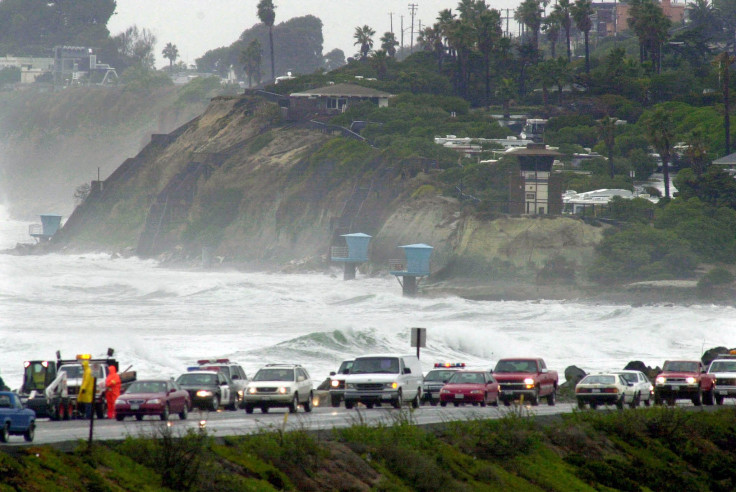California ‘King Tides’ Hit; Are Rising Sea Levels A Sign Of Climate Change?

Starting Monday, Californians can expect high tides to reach higher than normal. The arrival of the West Coast’s annual “king tides,” a twice-yearly phenomenon that brings occasional flooding, signals the alignment of the sun and moon, which creates maximum pull on the Earth’s oceans.
From Dec. 30 until about Jan. 2, California’s high tides will peak at an estimated 7.1 feet above average low tide, a National Weather Service representative told KPCC Radio. That’s about 1.5 feet higher than Los Angeles Harbor’s average high tide.
Last year, parts of Seal Beach were under water when the king tides reached 7.7 feet above the average low tide, the Los Alamitos-Seal Beach Patch reported. Parts of the Pacific Coast Highway were also flooded with sea water. But the National Weather Service predicts that weather of that kind is unlikely this year, although Wednesday’s swell is expected to be 2014’s highest tide all year. Sites around docks, beaches and piers, and low-lying roadways risk becoming inundated.
Are California’s king tides a sign of climate change? The annual high tide isn’t directly correlated to climate change; king tides are caused by the alignment of the sun and moon during the perihelion period, the moment in Earth’s yearlong orbit when the planet is closest to the sun. But some organizations, like the California King Tides Initiative, are capitalizing on this year’s king tides to highlight the overall rise in our planet’s sea levels caused by climate change. The group is asking California coastal residents to document this year’s king tides to offer a “glimpse of what our daily tides may look like in the future as a result of sea level rise.”
Research indicates that sea levels worldwide have risen at a rate of .14 inches per year since the early 1990s. Over the past century, the global mean sea level, measured using tide gauge readings, core samples and satellite readings, has risen by 4 to 8 inches.
“Over the past century, the burning of fossil fuels and other human and natural activities has released enormous amounts of heat-trapping gases into the atmosphere,” National Geographic reported. “These emissions have caused the Earth's surface temperature to rise, and the oceans absorb about 80 percent of this additional heat.”
Three factors contribute to higher sea levels. The first is thermal expansion, which occurs as water heats up and occupies more space. The second factor is melting ice caps and glaciers, and the third is ice loss from Greenland and West Antarctica. According to The BBC, between 1992 and 2001, the Greenland ice sheet lost 34 billion tons of ice per year. Between 2002 and 2011, that amount soared to 215 billion tons.
What might seem like a slight increase in sea level quickly adds up. According to National Geographic, recent studies estimate that by 2100, the oceans will have risen between 2.5 and 6.5 feet – enough to inundate many cities along the East Coast of the U.S.
© Copyright IBTimes 2024. All rights reserved.





















